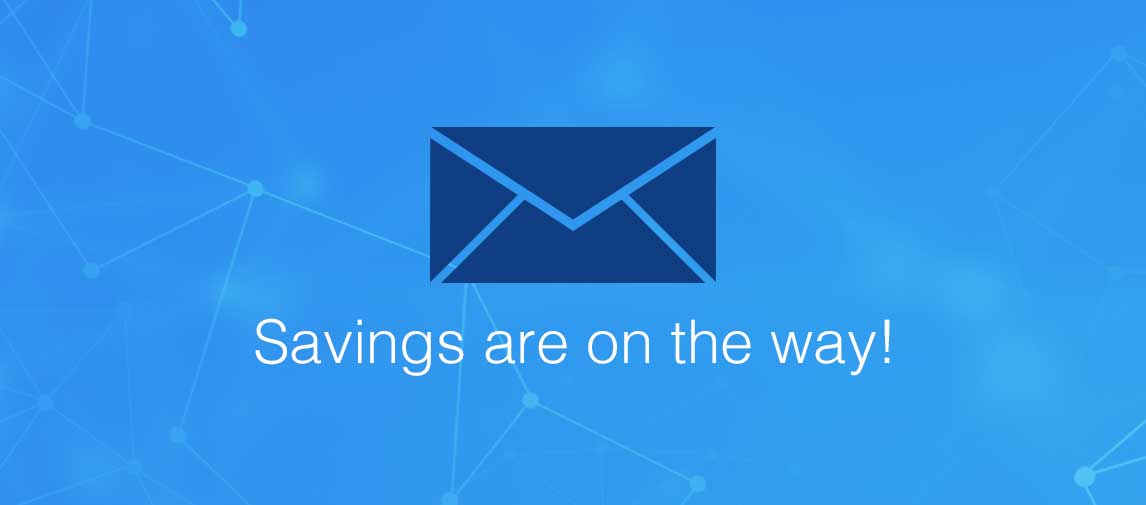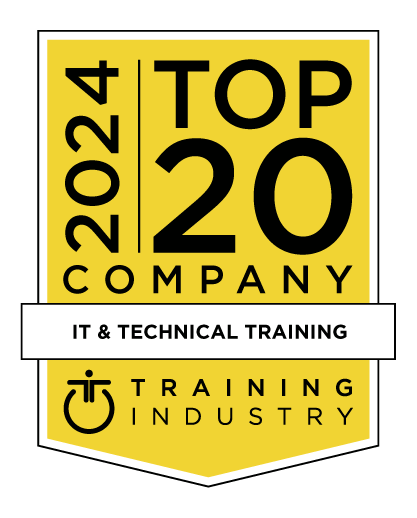title
Please take a moment to fill out this form. We will get back to you as soon as possible.
All fields marked with an asterisk (*) are mandatory.
Microsoft Dynamics 365: Finance and Operations Apps Developer
Course Description
Overview
In this course we discuss the tasks needed to fulfill the role of developer in Dynamics 365 Finance and Operations Apps. The Dynamics 365 Finance and Operations apps developer is a key technical resource that implements and extends the application to meet the requirements of the business.Objectives
Audience
Topics
- Finance and operations apps and associated apps
- Finance + Operations on-premises and cloud-based finance and operations apps
- Development and deployment processes
- The user interface
- Reporting capabilities
- Check your knowledge
- Differentiate cloud and on-premises architecture
- Elements, models, and packages
- Application components and architecture
- Metadata management processes
- Source control processes
- Conform code to organization policies
- Overview of Lifecycle Services
- Check your knowledge
- Introduction
- Identify relevant business concepts
- Evaluate functional specifications and create technical design documentation
- Identify the technical gaps
- Design patterns and practices for code deployments
- The process for deploying code changes
- Finance and operations apps frameworks
- Check your knowledge
- Introduction
- Perform support tasks
- Provision and manage environments
- Manage asset libraries
- Manage the code update process
- Check your knowledge
- Introduction
- Diagnose performance issues by using Trace parser
- Load testing by using the Performance SDK
- Monitor performance by using SQL Insights
- Create a SQL trace by using the SQL Profiler
- Monitor server health metrics in Lifecycle Services
- Exercise - Use the Environment monitoring tool in Lifecycle Services
- Check your knowledge
- Introduction
- Configure Visual Studio to connect to Azure DevOps
- Working in Visual Studio
- Manage and perform code reviews
- Check your knowledge
- Introduction
- Unit test framework
- Acceptance test library
- Task recorder
- Best Practices tool
- Identify various categories and types of errors
- Configure the testing environment and prepare data
- Run unit tests
- Document and fix issues
- Check your knowledge
- Introduction
- Create and modify report data sources and supporting classes
- Implement reporting security requirements
- Publish a report
- Lab – Set authorization requirements on database tables
- Check your knowledge
- Introduction
- Set up a VHD for first-time use
- Set up and manage a downloadable VHD for development
- Upgrade the VHD
- Exercise – Install a virtual machine
- Check your knowledge
- Introduction
- Create and build projects
- Create and use label files
- Manage metadata by using the Application Explorer
- Build deployment packages
- Synchronize data changes with the database
- Use the Element Designer to create elements
- Lab - Create a project and add an element
- Check your knowledge
- Introduction
- Implement base types and operators
- Common structured programming constructs of X++
- Use X++ to write SQL statements
- Use conditional and iterative statements
- Exception handling
- Use const values
- Use X++ runtime functions for common tasks
- Call .NET libraries by using X++ code
- Check your knowledge
- Introduction
- Explore inheritance and abstract classes
- Use attributes
- Implement Chain of Command
- Implement X++ scoping and access identifiers
- Interfaces
- Exercise - Create an extension by using Chain of Command
- Check your knowledge
- ALM methodologies
- Design and create models
- Plan the build, test, and quality control processes
- Identify upgrade scenarios and appropriate tools
- Plan the release, change, and risk management processes
- Check your knowledge
- Introduction
- Extended data types and element properties
- Base enums and element properties
- Lab - Create a base enumeration, add elements, and update properties
- Check your knowledge
- Create tables and table fields
- Populate table and field properties
- Add fields, field groups, indexes, and relations
- Table methods
- Create, manage, and extend views
- Create, manage, and extend queries
- Create, manage, and extend table maps
- Lab - Create a table, add fields, and create field groups
- Check your knowledge
- Introduction
- Add a new form to a project and apply a pattern
- Add a data source to a form
- Add grids, fields, and groups to a form
- Form methods
- Create and populate menu items
- Test form functionality and data connections
- Diagnose and optimize client performance
- Optimize form loading and performance
- Lab - Create a form
- Check your knowledge
- Introduction
- Add a class to a project
- Add code and methods to meet business requirements
- Data manipulation
- Lab - Insert records by using a runnable class
- Check your knowledge
- Implement Business document management
- Create and modify reports that use SSRS
- Implement query objects and query builder
- Create and modify reports by using Power BI
- Create and modify reports by using Excel
- Exercise - Create and deploy a report
- Check your knowledge
- Design KPIs
- Create drill-through workspace elements
- Create custom reusable report functions by using RDL
- Implement built-in KPIs, charts, and other reporting components
- Exercise - Create a workspace and add a tile, list, link, and Power BI element
- Check your knowledge
- Introduction
- Create and modify duties, privileges, and permissions
- Enforce permissions policy
- Extensible data security framework
- Apply security permissions
- Lab - Create a new security role and add duties
- Check your knowledge
- Introduction
- Identify and apply caching mechanisms
- Optimize temporary table usage
- When to use set-based statements and row-based operations
- Query optimization principles
- Modify the scope of a variable
- Analyze and optimize concurrency
- Apply parallel processing algorithms
- Implement the Async framework
- Develop Windows PowerShell scripts
- Lab - Create runnable classes in Visual Studio to test code
- Check your knowledge
- Introduction
- Customization models
- Extension points for frameworks
- Develop code to extend a framework
- Implement the SysOperationSandbox framework
- Lab - Extend an EDT
- Check your knowledge
- Introduction
- Add a table extension to a project
- Add a form extension to a project
- Lab - Extend a form and add controls
- Check your knowledge
- Introduction
- Business event framework
- Create a new business event
- Activate business events
- Consume business events
- Extend an existing business event
- Role-based security for business events
- Business events in Microsoft Power Automate
- Check your knowledge
- Introduction
- Workflow types for business processes
- Create and set up workflows
- Assign users to workflow elements
- Use the daily journal workflow
- Lab - Create a purchase requisition workflow
- Check your knowledge
- Introduction
- Select an integration API
- Synchronous and asynchronous patterns
- Data integration scenarios
- Check your knowledge
- Introduction
- Develop an entity and enable it for data export
- Implement custom services
- Expose OData endpoints from data entities
- Consume external web services
- Integrate finance and operations apps with Microsoft Excel
- Integrate finance and operations apps with external applications by using Power Apps
- Download electronic document interchange solutions
- Verify source and target data for auditing
- Debug with JSON Web Tokens
- Check your knowledge
- Introduction
- Import and export APIs
- Monitor the status of APIs
- Manage entity change tracking
- Create wrapper classes to consume external web services
- Create wrapper classes with C#
- Check your knowledge
- Introduction
- Set up a data project and recurring data job
- Exercise - Create a data project and recurring data job
- Implement authorization to support integration
- Monitor status and availability of entities
- Develop data transformation
- Microsoft Dataverse integrations
- Work with composite data entities
- Azure Data Lake and Entity Store
- Change data in Azure Data Lake
- Power Platform convergence
- Check your knowledge
- Introduction
- Select a data integration (import/export) strategy
- Common migration scenarios and tools
- Bring your own database (BYOD)
- Test a data migration and validate output
- Check your knowledge
- Introduction
- Identify report data source requirements for external sources
- Create and manage custom data sources
- Optimize data entities to achieve better performance
- Lab - Create a data entity
- Check your knowledge
- Introduction
- Develop and integrate by using Logic Apps
- Develop and integrate Microsoft Power Platform
- Integrate finance and operations apps with enterprise applications
- Automate EAI, B2B, EDI, and business processes with Logic Apps
- Consume data from the Azure Machine Learning service
- Enable connectivity with external services
- Optimize data entities to achieve better performance
- Check your knowledge
- Connect your finance and operations apps data using Power Automate
- Connect to your finance and operations apps data with Power Apps
- Finance and operations data on Common Data Model and Microsoft Dataverse
- Check your knowledge
- Alerting and automatic actions
- Pause and Resume options
- Initial sync
- Live sync
- Tools for performance issues
- Best practices
- Exercise – Troubleshoot dual-write integration
- Check your knowledge
- Introduction
- Data management concepts
- Use data entities for data management and integration
- Work with the Data management workspace
- Using Standard and Enhanced views for tiles
- Use templates in data management
- Export, import, and copy data into a legal entity
- Lab - Explore the Data management workspace
- Lab - Export data using the Data management workspace
- Database movement operations
- Data sharing framework
- Check your knowledge
- Introduction
- Create user acceptance test libraries
- Record test cases and save to BPM
- Synchronize and configure your test plan in Azure DevOps
- Run user acceptance tests
- Data task automation
- Exercise - Build test scripts to test business functionality
- Check your knowledge
- Introduction
- Understand the go-live process
- Complete the Lifecycle Services methodology
- Perform user acceptance testing (UAT) for your solution
- FastTrack go-live assessment
- Request a production environment
- Check your knowledge
- Introduction
- RSAT and reasons to use it
- Create a test recording in Store Commerce
- Install and configure RSAT
- Load test cases and run automated tests
- Check your knowledge
- Introduction
- Understand different types of reports and inquiries
- Financial reporting
- Find inquiries and reports
- Generate and consume inquiries and reports
- Configure finance and operations apps for Microsoft Power Platform
- Lab - Work with reports
- Check your knowledge
- Introduction
- Configure electronic reporting
- Use barcode data sources to generate bar code images
- Lab - Generate electronic documents for payments
- Check your knowledge
Related Courses
-
Manage Financial Operations with Dynamics 365 Finance
MOC-MB-310T00- Duration: 4 Days
- Delivery Format: Classroom Training, Online Training
- Price: 2,380.00 USD
-
Microsoft Dynamics 365 Supply Chain Management
MOC-MB-330T00- Duration: 5 Days
- Delivery Format: Classroom Training, Online Training
- Price: 2,995.00 USD
Self-Paced Training Info
Learn at your own pace with anytime, anywhere training
- Same in-demand topics as instructor-led public and private classes.
- Standalone learning or supplemental reinforcement.
- e-Learning content varies by course and technology.
- View the Self-Paced version of this outline and what is included in the SPVC course.
- Learn more about e-Learning
Course Added To Shopping Cart
bla
bla
bla
bla
bla
bla
Self-Paced Training Terms & Conditions
Exam Terms & Conditions
ONCE YOU PURCHASE THIS EXAM YOU WILL NOT BE ABLE TO CANCEL YOUR ORDER. You are billed for the course after hitting submit. Exams are non-refundable.
Vouchers expire 12 months from the date they are issued, unless otherwise specified in the terms and conditions. Voucher expiration dates cannot be extended. All sales are final.Please refer to the full terms and conditions here.
Sorry, there are no classes that meet your criteria.
Please contact us to schedule a class.

STOP! Before You Leave
Save 0% on this course!
Take advantage of our online-only offer & save 0% on any course !
Promo Code skip0 will be applied to your registration
Purchase Information
title
Please take a moment to fill out this form. We will get back to you as soon as possible.
All fields marked with an asterisk (*) are mandatory.










